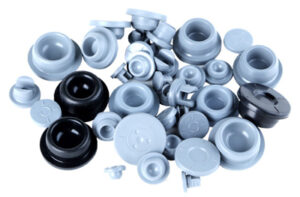Industrial rubber market forecast with a CAGR of 5.5 percent
Pune, India – The global industrial rubber market is estimated to be valued at US$ 36.3 billion in 2023 and is expected to grow at a CAGR of 5.5% during the forecast period of 2023-2033 according to Fact.MR.
Industrial rubber offers a combination of unique properties that make it highly desirable for many applications across numerous end-use industries such as automobile, construction, and others. Rubber is known for its excellent elasticity, flexibility, and resilience, allowing it to deform and recover its shape under stress. These properties make rubber ideal for sealing, vibration damping, shock absorption, and providing a reliable barrier against fluids, gases, and electrical conductivity.
Industrial rubber is a versatile material that is formulated and processed to meet specific requirements. It can be molded, extruded, or fabricated into various shapes, sizes, and configurations, making it adaptable for a wide range of applications across different industries. Rubber products can be customized to withstand extreme temperatures, chemicals, weathering, and mechanical stresses, enhancing their utility in diverse environments.
The automotive industry is a major consumer of industrial rubber products. As the automotive sector continues to expand, due to the increasing vehicle production and demand for electric and autonomous vehicles, the demand for industrial rubber components such as tires, seals, hoses, and belts are expected to grow, thus, driving the industrial rubber market.
Key Takeaways from Market Study
The global industrial rubber market size reported by Fact.MR for 2022 was US$ 34.4 billion
The global industrial rubber market size is estimated to reach US$ 62.0 billion in 2033
The projected CAGR for the global industrial rubber market from 2023 to 2033 will be 5.5%
Application in automobiles accounts for a major share in industrial rubber as compared to the other industries
Synthetic rubber captures the highest share of industrial rubber
“Industrial rubber is in high demand throughout a wide range of end-use industries. In the industrial rubber market, manufacturers are developing eco-friendly rubber products by incorporating recycled rubber, using bio-based materials, and reducing the environmental impact of production processes. In response to the rising demand for customization and shifting consumer preference toward sustainability. This trend will be consistent with the industry’s emphasis on minimizing waste, carbon emissions, and reliance on non-renewable resources.” says a Fact.MR analyst.
Manufacturers focus on developing new and improved rubber products to meet customer demands and address market needs. This involves investing in research and development to enhance product performance, durability, and functionality. Innovation also involves the development of eco-friendly and sustainable rubber materials or the integration of advanced technologies into rubber products.

